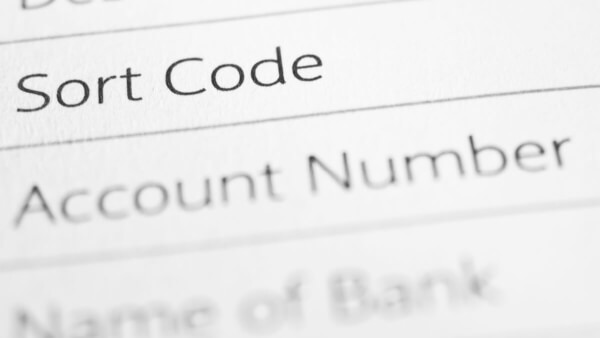What are the strongest currencies in the world? (2024)
The strongest currency in the world might not be the one you think it is. Discover the top 10 global currencies and our guide to each of them.

In theory, exchange rates are simple. A dictionary (OK, a Google search) defines an exchange rate as, ‘‘the value of one currency for the purpose of exchanging it with another currency.’
So far so good. But in practise, exchange rates are far more complex.
Your money is worth more - or less - depending on the exchange service you choose. And even then, the rate offered by any one provider can hop around like a cat on a hot tin roof. Add arbitrary fees and charges to the equation, and it’ll be impossible to know what you're actually getting.
So why are there so many different rates available? Why do they move so frequently? And why do they matter? Read this quick guide to learn more.
Exchange rates are important to us as individuals travelling, working or studying abroad. But they also have a wider impact on national economies and the shape of global trade. Rates change based on the supply and demand of a particular currency. If more people want to buy it, the value rises, while excess supply causes it to fall.
On this macro level, the demand for a particular currency is influenced by how confident investors and businesses are about the political and economic outlook. A stable and growing economy drives rates up, while instability can cause the market to wobble and currency value to fall.
Exchange rates can be either fixed or floating. Most major nations have floating rates - meaning that the value of their currency goes up and down with the market. However, other countries choose to fix (or ‘peg’) their rate to another currency. For example, in Bulgaria, the Lev is pegged to the Euro, meaning its value rises and falls in line with this.
So on a broad scale, exchange rates are driven by how stable and prosperous a country is. And as an individual, the exchange rates that we can access depend on the banks and exchange services available to us.
If you feel like you need to learn a new language just to understand exchange rates, you’re not alone. Here’s a quick cheat sheet to learn the bank’s lingo and make sure you get a fair deal.
In retail currency transactions you’ll see different rates quoted, depending on whether you are buying or selling a currency.
So if you’re in the UK, and about to go on holiday to the US, you’ll want to switch your Sterling for Dollars. To do this, you’ll need to look at the Dollar ‘sell’ rate, which will be used to calculate how many Dollars the service will sell you for your Sterling.
If, by some miracle (or a massive Vegas win), you return with Dollars in your pocket, and wish to exchange them back to Sterling in the UK, look for the ‘buy’ rate.
The difference between the retail prices offered to buy and sell currency is known as the spread.
Commission is the charge added by some exchange services as their cut for processing your exchange transaction. Many services claim to be free from commission, but exercise caution. Look at the rates on offer carefully before committing, to make sure you’re not ripped off.
When quoting exchange rates, the pairings might not include the domestic currency. This is known as a ‘cross rate’. If you’re changing US Dollars for Euros, but doing so in an exchange service based in the UK, the rate you’re quoted is a cross rate because Sterling isn’t involved.
The mid market rate is also known as the interbank rate. As it sounds, this is the rate that banks will use if they sell currency to each other. It’s figured out by taking the midpoint between the buy and sell rates used on the open market. This is the only real exchange rate. Anything else is simply a number made up by the banks, including their slice of profit.
The spot rate is simply the exchange rate at the precise moment of quotation (as opposed to a rate promised for a future transaction). However, when this term is used, it’s likely to mean the interbank rate rather than the (fictional) retail rates.
So now you’re talking the language of the banks, why is it that there are so many different rates on offer?
All currency exchange providers pay attention to the mid market rate, but what they do after that to set their retail ‘day’ rates varies. As companies interested in making a profit, each service will add their own special sauce to make sure that they get a cut.
Many exchange services claim that they charge no commission, for example. But a quick comparison of their retail rates will show you that this does not mean no mark up. It’s simply that the bank’s margin is hidden within the rate they offer. This gives a great headline, but might leave you out of pocket in the end.
With so many different exchange platforms, each offering slightly different rates, it really is a case of ‘buyer beware’. It’s worth doing your homework, using currency conversion calculators to compare your options, and peering deeper into the murky details of charges and fees.
Choose a transparent service like Wise which uses the mid market rate - and say no to ‘no commission’ smoke and mirrors.
*Please see terms of use and product availability for your region or visit Wise fees and pricing for the most up to date pricing and fee information.
This publication is provided for general information purposes and does not constitute legal, tax or other professional advice from Wise Payments Limited or its subsidiaries and its affiliates, and it is not intended as a substitute for obtaining advice from a financial advisor or any other professional.
We make no representations, warranties or guarantees, whether expressed or implied, that the content in the publication is accurate, complete or up to date.

The strongest currency in the world might not be the one you think it is. Discover the top 10 global currencies and our guide to each of them.

If you bank with Chase UK®¹ and you’re worried about the security of your payment card, you’ll be looking for quick and convenient ways to cancel a Chase card...

If you’re planning a holiday or business trip, you’ll need to work out the cost of spending in a different currency. Many people these days choose to spend on...

Looking for Christmas savings tips? You’re in the right place. As the costs of living increase, and rising interest rates push up mortgage repayments for many...

For customers of Wise Payments Ltd, sending or holding money in the Wise account, we safeguard it in keeping with Wise’s regulatory obligations in the UK. We...

A handy guide to the sort code used in UK banking, including what it is, what it looks like and how to find a sort code.